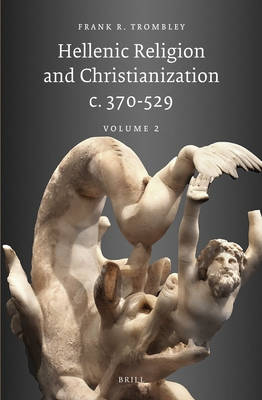
- Afhalen na 1 uur in een winkel met voorraad
- Gratis thuislevering in België vanaf € 30
- Ruim aanbod met 7 miljoen producten
- Afhalen na 1 uur in een winkel met voorraad
- Gratis thuislevering in België vanaf € 30
- Ruim aanbod met 7 miljoen producten
Zoeken
Omschrijving
This work discusses the decline of Greek religion and the christianization of town and countryside in the eastern Roman Empire between the death of Julian the Apostate and the laws of Justinian the Great against paganism, c. 370-529.
It examines such questions as the effect of the laws against sacrifice and sorcery, temple conversions, the degradation of pagan gods into daimones, the christianization of rite, and the social, political and economic background of conversion to Christianity. Several local contexts are examined in great detail: Gaza, Athens, Alexandria, Aphrodisias, central Asia Minor, northern Syria, the Nile basin, and the province of Arabia.
It lays particular emphasis on the criticism of epigraphy, legal evidence, and hagiographic texts, and traces the demographic growth of Christianity and the chronology of this process in select local contexts. It also seeks to understand the behavioral patterns of conversion.
It examines such questions as the effect of the laws against sacrifice and sorcery, temple conversions, the degradation of pagan gods into daimones, the christianization of rite, and the social, political and economic background of conversion to Christianity. Several local contexts are examined in great detail: Gaza, Athens, Alexandria, Aphrodisias, central Asia Minor, northern Syria, the Nile basin, and the province of Arabia.
It lays particular emphasis on the criticism of epigraphy, legal evidence, and hagiographic texts, and traces the demographic growth of Christianity and the chronology of this process in select local contexts. It also seeks to understand the behavioral patterns of conversion.
Specificaties
Betrokkenen
- Auteur(s):
- Uitgeverij:
Inhoud
- Aantal bladzijden:
- 448
- Taal:
- Engels
- Reeks:
- Reeksnummer:
- nr. 115
Eigenschappen
- Productcode (EAN):
- 9789004096912
- Verschijningsdatum:
- 1/06/1995
- Uitvoering:
- Hardcover
- Formaat:
- Genaaid
- Afmetingen:
- 163 mm x 244 mm
- Gewicht:
- 925 g

Alleen bij Standaard Boekhandel
+ 870 punten op je klantenkaart van Standaard Boekhandel
Beoordelingen
We publiceren alleen reviews die voldoen aan de voorwaarden voor reviews. Bekijk onze voorwaarden voor reviews.








